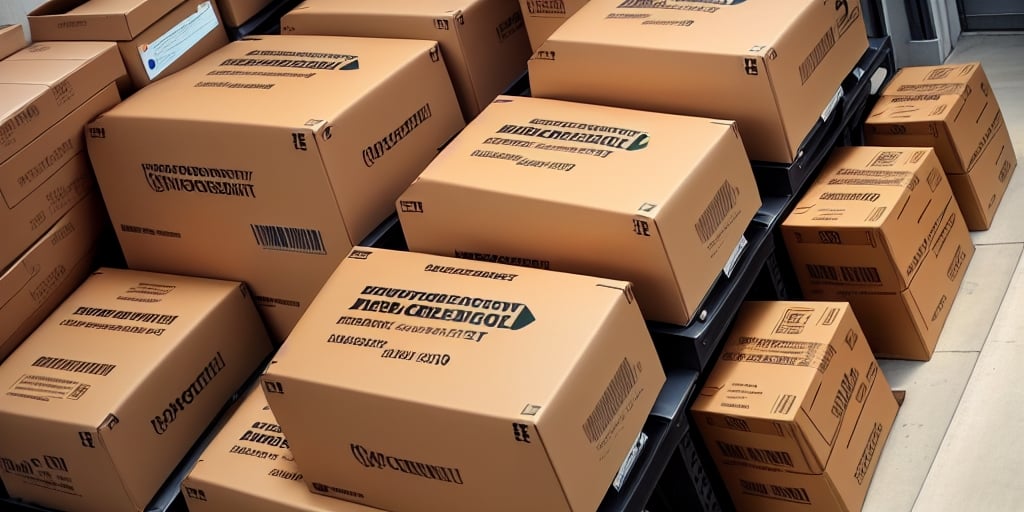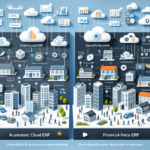Integrating UPS Worldship with Your ERP System: Comprehensive Guide for 2024
In today’s fast-paced business environment, streamlined processes are crucial for seamless operations. Integrating UPS Worldship with your ERP (Enterprise Resource Planning) system can significantly enhance your shipping and logistics management. This guide explores the importance of this integration, its benefits, and provides a step-by-step approach to successfully implement it.
Importance of Integrating UPS Worldship with an ERP System
Enhancing Operational Efficiency
Integrating UPS Worldship with an ERP system centralizes shipping and logistics tasks, including tracking shipments, printing labels, and generating invoices. This centralization not only streamlines operations but also ensures consistency across different business functions.
Reducing Errors and Manual Work
Automation through integration minimizes the need for manual data entry, which is not only time-consuming but also prone to errors. According to a study by Bureau of Labor Statistics, businesses that adopt automated systems can reduce data entry errors by up to 80%, leading to more accurate order processing and enhanced customer satisfaction.
Real-Time Visibility and Decision Making
The integration provides real-time insights into shipping operations, enabling businesses to make informed decisions swiftly. This visibility is crucial for optimizing shipping strategies and responding promptly to any logistical challenges.
Benefits of UPS Worldship and ERP Integration
Improved Inventory Management
With real-time access to shipping and logistics data, businesses can better track inventory levels, preventing stockouts and overstocking. This balance helps in maintaining optimal inventory, reducing costs associated with excess stock or lost sales due to stockouts.
Enhanced Compliance and Security
An integrated system automatically generates shipping labels and documentation that comply with local and international regulations, reducing the risk of non-compliance penalties. Additionally, enhanced security features protect sensitive shipping data from breaches.
Cost Savings and Increased Revenue
Businesses can achieve significant cost savings by automating shipping processes, reducing labor costs, and minimizing errors. Moreover, improved customer satisfaction through accurate and timely shipments can lead to increased sales and customer loyalty.
Understanding UPS Worldship and ERP Systems
What is UPS Worldship?
UPS Worldship is a comprehensive shipping software designed to help businesses manage their shipping tasks efficiently. It offers features such as label printing, shipment tracking, and batch processing, making it a reliable and cost-effective solution for businesses of all sizes.
What is an ERP System?
An ERP System is a centralized platform that integrates various business processes, including finance, human resources, inventory, and logistics. It helps businesses streamline operations, eliminate redundant tasks, and enhance overall productivity.
Choosing the Right ERP System for Integration
Customization and Flexibility
When selecting an ERP system, consider its level of customization. Your business may have unique processes that standard ERP systems cannot accommodate. Look for systems that offer configurable modules or support custom development to meet your specific needs.
Scalability and Future-Proofing
Choose an ERP system that can scale with your business growth. It should support increasing data volumes, user loads, and additional functionalities without compromising performance. This ensures that your investment remains valuable as your business evolves.
Preparing for Integration
Assessing Current Systems
Evaluate your existing shipping and ERP systems to identify compatibility and potential integration points. Understanding the current infrastructure helps in developing a seamless integration strategy.
Planning and Communication
Create a detailed integration plan, outlining timelines, resource allocations, and key milestones. Communicate the integration process and its benefits to all stakeholders to ensure alignment and minimize resistance to change.
Step-by-Step Guide to Integrating UPS Worldship with an ERP System
1. Evaluate Compatibility
Ensure that both UPS Worldship and your ERP system support integration. Check for available APIs, middleware solutions, or built-in integration tools that facilitate communication between the two systems.
2. Develop an Integration Plan
Outline the integration process, including specific tasks, responsible teams, and deadlines. A well-structured plan helps in managing the integration efficiently and mitigating potential risks.
3. Conduct a Pilot Test
Perform a test run of the integration with a small batch of shipments. This allows you to identify and address any issues before full-scale implementation, ensuring a smoother transition.
4. Implement the Integration
Once the pilot test is successful, proceed with the full integration. Monitor the process closely to ensure that all data flows correctly between UPS Worldship and the ERP system.
5. Post-Implementation Monitoring
After integration, continuously monitor the system to ensure it operates as expected. Make necessary adjustments based on performance metrics and user feedback.
Overcoming Common Integration Challenges
Technical Compatibility Issues
Ensure both systems are compatible and seek technical support if necessary. Utilizing middleware or integration platforms can help bridge compatibility gaps between different systems.
Employee Training and Adaptation
Provide comprehensive training to employees on using the integrated system. Effective training ensures that staff can leverage the new system's capabilities fully, enhancing overall productivity.
Best Practices for Maintaining the Integrated System
Regular Updates and Maintenance
Keep both UPS Worldship and your ERP system updated to the latest versions. Regular updates ensure you benefit from new features, security enhancements, and improved performance.
Continuous Performance Monitoring
Monitor key performance indicators (KPIs) to assess the system's effectiveness. Regular performance reviews help in identifying areas for improvement and ensuring the system aligns with business objectives.
Future Trends in Shipping and Logistics Integration
Automation and AI
The integration of automation and artificial intelligence in shipping and logistics is on the rise. AI-driven analytics can optimize shipping routes, predict demand fluctuations, and enhance decision-making processes.
Blockchain for Supply Chain Transparency
Blockchain technology offers enhanced security and transparency in supply chain management. It ensures data integrity, reduces fraud, and improves traceability of shipments from origin to destination.
Conclusion
Integrating UPS Worldship with an ERP system is a strategic move that can significantly enhance your shipping and logistics operations. By automating processes, reducing errors, and providing real-time visibility, this integration leads to increased efficiency, cost savings, and improved customer satisfaction. Following this comprehensive guide will help you successfully implement the integration, positioning your business for sustained growth and competitive advantage.




















